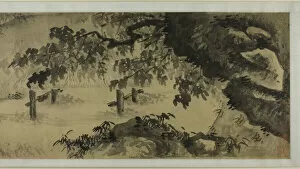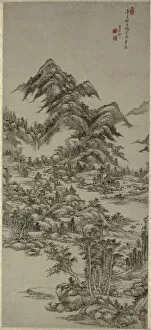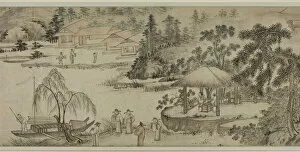Landscapearts Of Asia Collection (#4)
"Exploring the Timeless Beauty of Asian Landscape Arts" Immerse yourself in the captivating world of Asian landscape arts
For sale as Licensed Images
Choose your image, Select your licence and Download the media
"Exploring the Timeless Beauty of Asian Landscape Arts" Immerse yourself in the captivating world of Asian landscape arts, where nature and artistry intertwine to create breathtaking masterpieces. From ancient dynasties to more recent periods, these artworks offer a glimpse into the rich cultural heritage of Asia. One such example is the "Scholar in Landscape, " a Yuan dynasty creation from the 14th century or later. Its unknown creator skillfully depicts a scholar amidst serene natural surroundings, symbolizing harmony between man and nature. Intriguingly, the late Ming or early Qing dynasty artwork simply titled "Landscape" transports us to an era when meticulous brushstrokes captured scenes that evoke tranquility and contemplation. The enigmatic "Flight of Geese, " hailing from the Yuan dynasty, showcases an unknown artist's ability to convey movement and grace through ink on silk. The geese soaring across the painting symbolize freedom and migration. Another masterpiece is "Water Pavilion by Twin Pines, " believed to be from either Yuan or early Ming dynasty. Created by an anonymous artist, this piece portrays a tranquil pavilion nestled among towering pines reflected in calm waters—a testament to serenity found within nature's embrace. Moving forward in time, we encounter a landscape artwork dating back to Qing dynasty/early Republican period (19th/early 20th century). This piece captures both traditional elements and influences from modern times—an amalgamation of old-world charm with contemporary flair. "One Hundred Cranes, " originating from qing dynasty but with creators unknown as well as Shen Nanpin's contribution, presents ethereal cranes dancing against vibrant landscapes—a representation of longevity and good fortune deeply rooted in Eastern culture. Oguri Sotan's work takes us back further still—to 15th-century Japan—where his landscape painting mesmerizes viewers with its delicate brushwork depicting mountains shrouded in misty allure.








